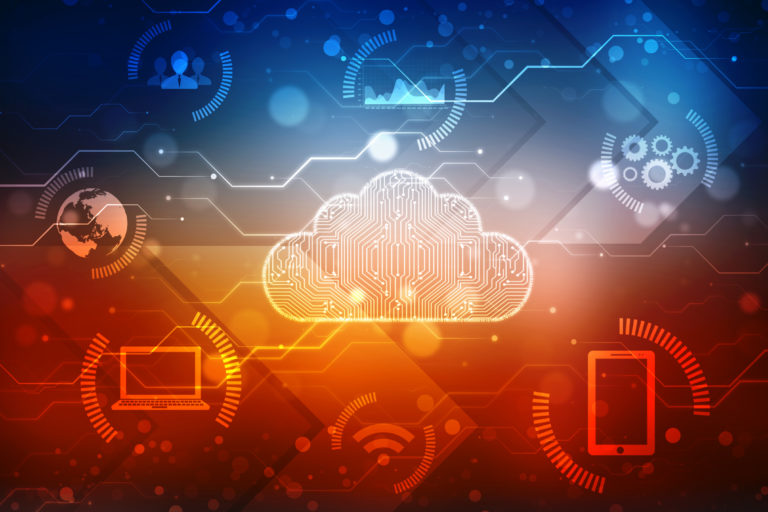04:34:56 pm 10/03/2023
Viewed: 5475
Demystifying the Cloud: A Guide for the Everyday Person
Have you ever heard someone say, "It's stored in the cloud," and wondered what on Earth they were talking about? Don't worry; you're not alone. The term "cloud" can sound like a mysterious place where data floats around. But it's actually quite straightforward. Let's break it down in layman's terms.
What is the Cloud?
Imagine the cloud as a gigantic, invisible storage locker that you can access from anywhere, anytime, as long as you have an internet connection. Instead of saving your photos, documents, or software on your personal computer, you're storing them on a powerful computer (known as a server) located somewhere else in the world.
1. Renting a Storage Unit (IaaS)
What It Is: Imagine you need a place to store your stuff, but you don't want to buy a whole building. You rent a storage unit instead. This is similar to Infrastructure as a Service (IaaS). You're renting a piece of a powerful computer to store your data or run your website.
Examples: Amazon EC2, Microsoft Azure VMs
2. Renting a Workshop (PaaS)
What It Is: Let's say you love woodworking, but you don't have the space or tools. You could rent a workshop that has everything you need. Platform as a Service (PaaS) is like that workshop. It gives you a place and the tools to create software applications without worrying about the technical stuff.
Examples: Heroku, Google App Engine
3. Netflix for Software (SaaS)
What It Is: Software as a Service (SaaS) is like Netflix but for software. Instead of buying a DVD, you stream movies whenever you want. Similarly, you can use software like Microsoft Word or Google Sheets through the internet without installing anything on your computer.
Examples: Google Workspace, Microsoft Office 365
4. Pay-as-You-Go (FaaS/Serverless)
What It Is: Imagine a workshop where you only pay for the exact time and tools you use. Function as a Service (FaaS) or Serverless computing is like that. You only pay for the computer power you use for the specific tasks you perform.
Examples: AWS Lambda, Azure Functions
Easy to Grow
If your needs increase, you can easily rent more space or tools from the cloud, just like renting additional storage units or workshops.
Cost-Effective
You only pay for what you use. It's like paying for a gym membership instead of buying all the gym equipment yourself.
Access Anywhere
You can get to your stored items from any device with internet access, whether you're at home, at work, or on vacation.
Safety Net
If something happens to your computer, your data is still safe and sound in the cloud.
Disadvantages of Using the Cloud
Speed
Sometimes, retrieving your stuff from the cloud can be slower than getting it from your own computer, especially if your internet connection is weak.
Security
Since your data is stored somewhere else, there's a chance (although minimal) that someone could access it without your permission.
Costs Can Add Up
If you're not careful, the costs of using more and more cloud services can add up, just like any subscription service.
In a Nutshell
The cloud is like a massive, secure, and accessible storage locker for your digital life. It's not as mystical as it sounds, and it's becoming a part of everyday life for both individuals and businesses.
So the next time someone mentions "the cloud," you'll know they're not talking about fluffy white things in the sky, but a convenient and powerful way to manage data and use software.
Have you ever heard someone say, "It's stored in the cloud," and wondered what on Earth they were talking about? Don't worry; you're not alone. The term "cloud" can sound like a mysterious place where data floats around. But it's actually quite straightforward. Let's break it down in layman's terms.
What is the Cloud?
Imagine the cloud as a gigantic, invisible storage locker that you can access from anywhere, anytime, as long as you have an internet connection. Instead of saving your photos, documents, or software on your personal computer, you're storing them on a powerful computer (known as a server) located somewhere else in the world.
Types of Cloud Services:
What It Is: Imagine you need a place to store your stuff, but you don't want to buy a whole building. You rent a storage unit instead. This is similar to Infrastructure as a Service (IaaS). You're renting a piece of a powerful computer to store your data or run your website.
Examples: Amazon EC2, Microsoft Azure VMs
2. Renting a Workshop (PaaS)
What It Is: Let's say you love woodworking, but you don't have the space or tools. You could rent a workshop that has everything you need. Platform as a Service (PaaS) is like that workshop. It gives you a place and the tools to create software applications without worrying about the technical stuff.
Examples: Heroku, Google App Engine
3. Netflix for Software (SaaS)
What It Is: Software as a Service (SaaS) is like Netflix but for software. Instead of buying a DVD, you stream movies whenever you want. Similarly, you can use software like Microsoft Word or Google Sheets through the internet without installing anything on your computer.
Examples: Google Workspace, Microsoft Office 365
4. Pay-as-You-Go (FaaS/Serverless)
What It Is: Imagine a workshop where you only pay for the exact time and tools you use. Function as a Service (FaaS) or Serverless computing is like that. You only pay for the computer power you use for the specific tasks you perform.
Examples: AWS Lambda, Azure Functions
Advantages of Using the Cloud
If your needs increase, you can easily rent more space or tools from the cloud, just like renting additional storage units or workshops.
Cost-Effective
You only pay for what you use. It's like paying for a gym membership instead of buying all the gym equipment yourself.
Access Anywhere
You can get to your stored items from any device with internet access, whether you're at home, at work, or on vacation.
Safety Net
If something happens to your computer, your data is still safe and sound in the cloud.
Disadvantages of Using the Cloud
Speed
Sometimes, retrieving your stuff from the cloud can be slower than getting it from your own computer, especially if your internet connection is weak.
Security
Since your data is stored somewhere else, there's a chance (although minimal) that someone could access it without your permission.
Costs Can Add Up
If you're not careful, the costs of using more and more cloud services can add up, just like any subscription service.
In a Nutshell
The cloud is like a massive, secure, and accessible storage locker for your digital life. It's not as mystical as it sounds, and it's becoming a part of everyday life for both individuals and businesses.
So the next time someone mentions "the cloud," you'll know they're not talking about fluffy white things in the sky, but a convenient and powerful way to manage data and use software.
No video exists.





Comments